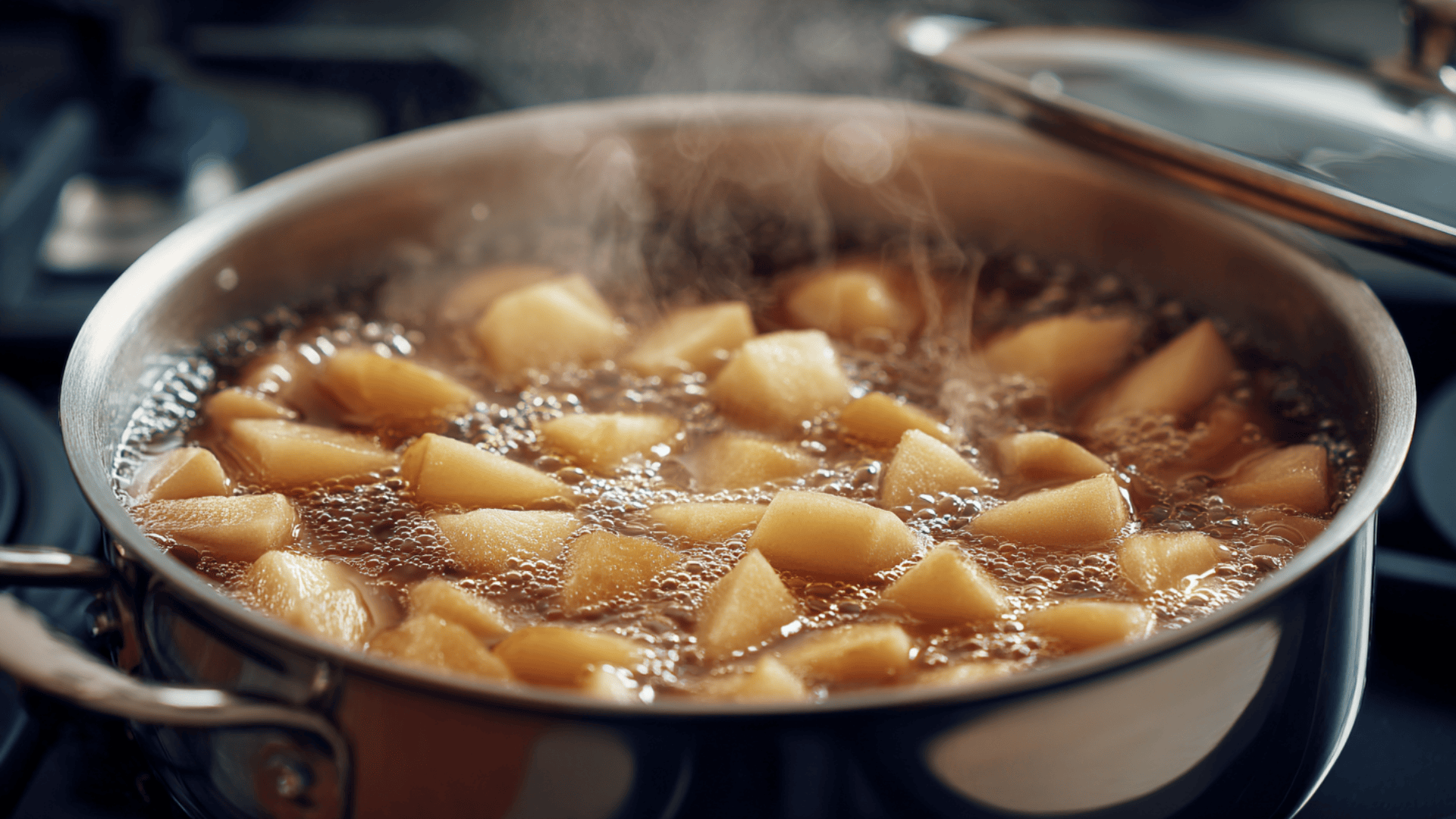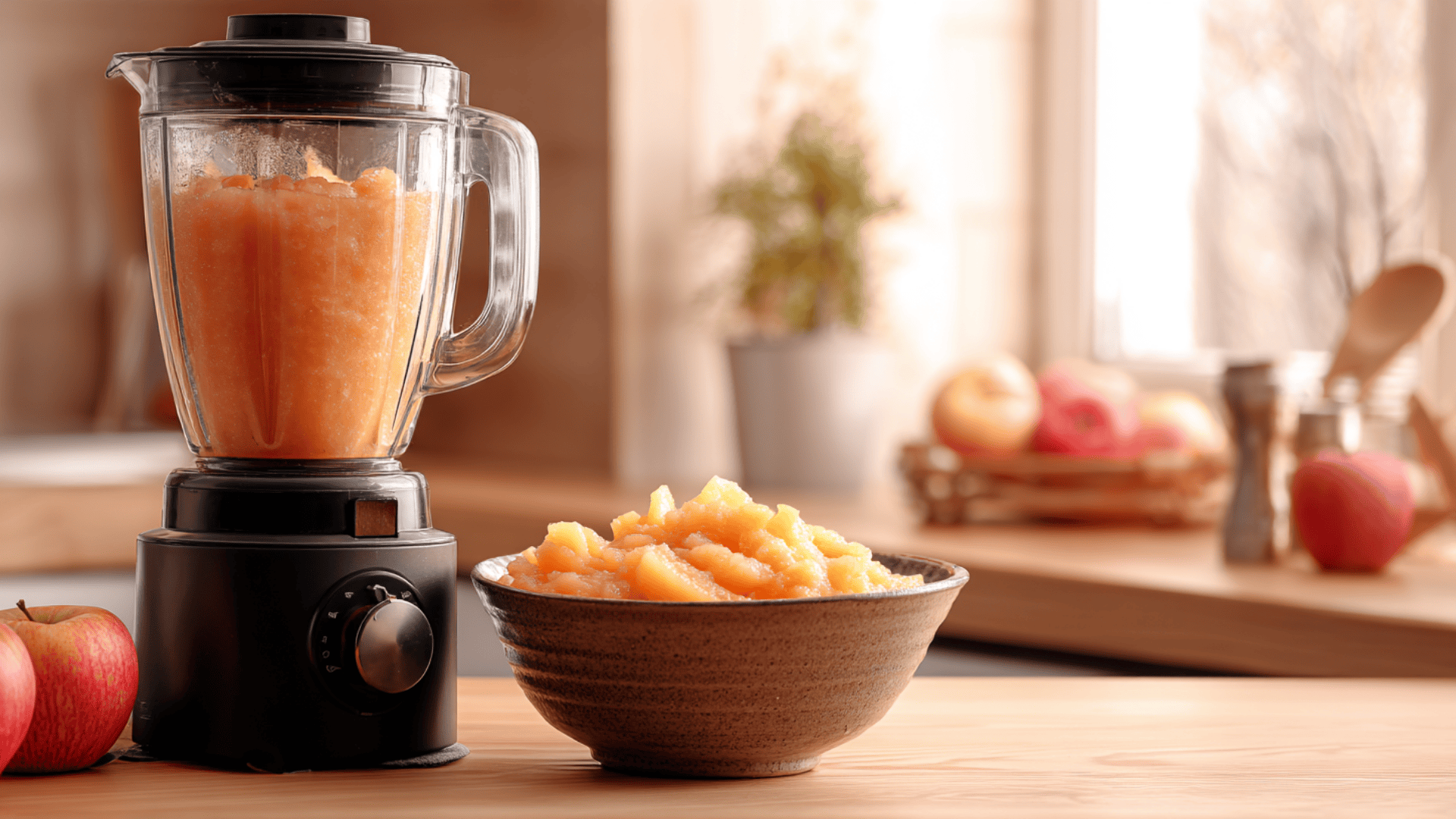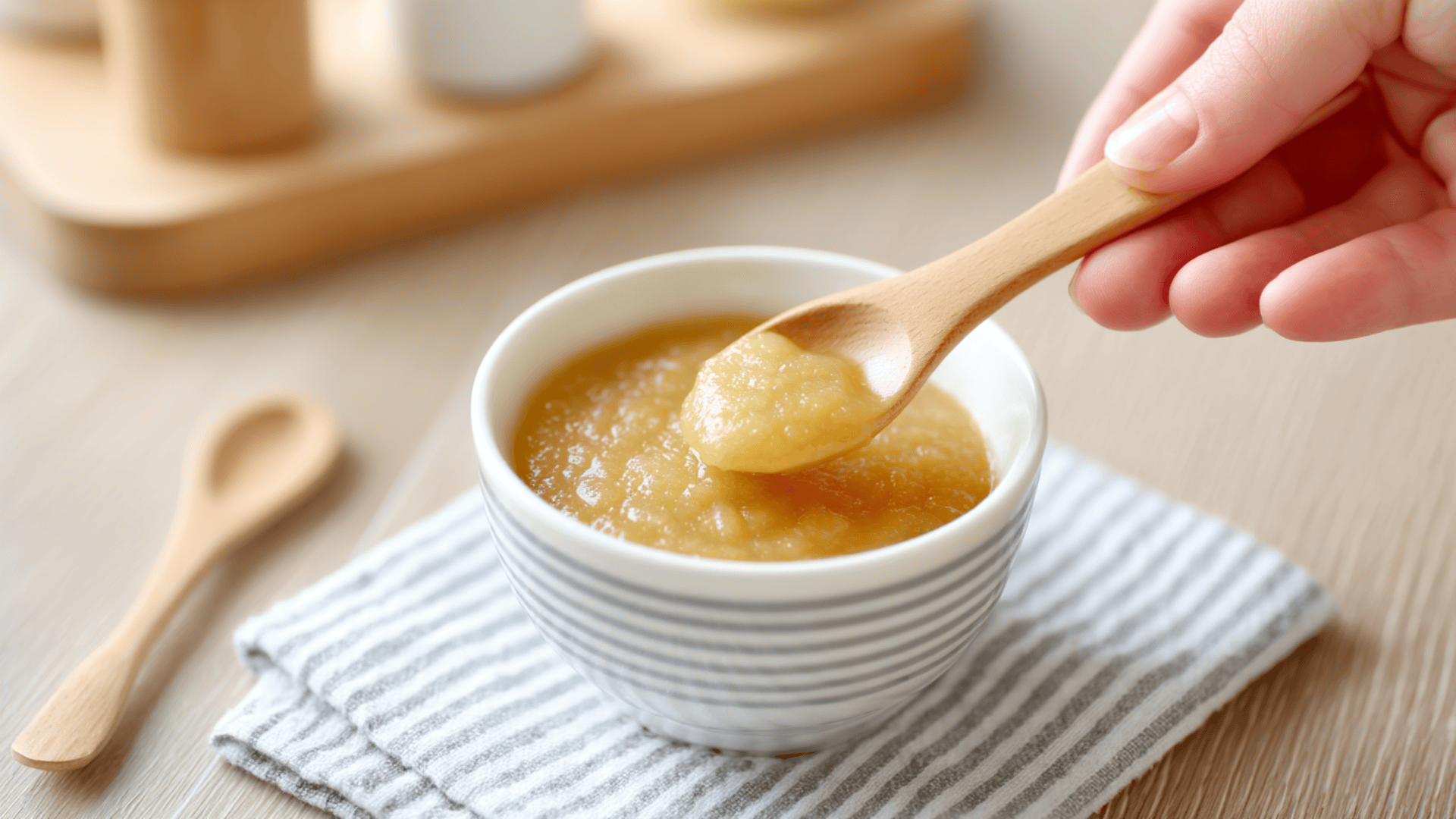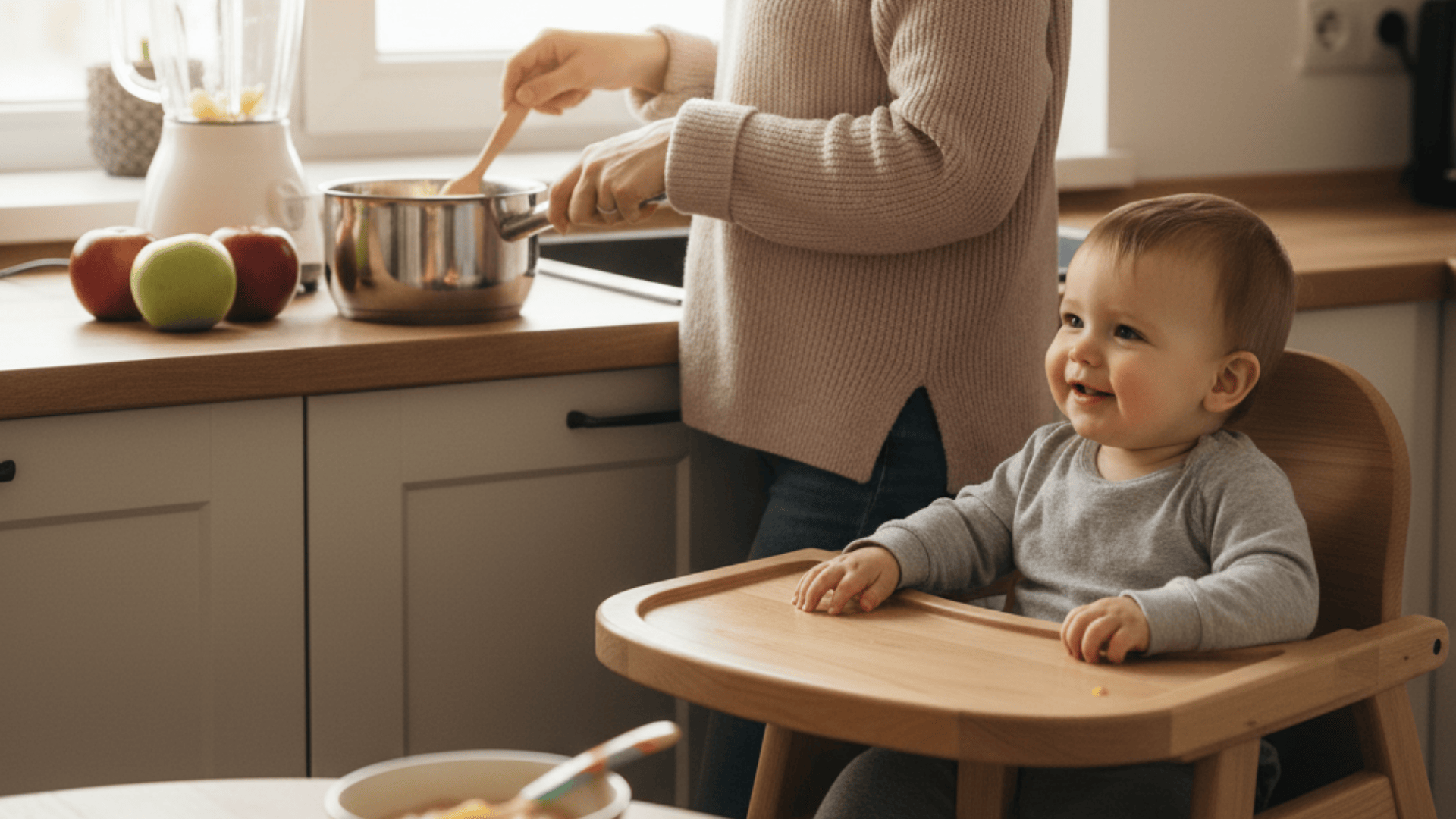Starting solids is an exciting milestone, but it can also feel overwhelming when you’re deciding what foods to try first.
Many parents turn to apples because they’re naturally sweet, gentle on tiny stomachs, and easy to prepare at home.
Learning how to make applesauce for a baby not only gives you control over ingredients but also creates a safe, nutritious option you can adjust as your child grows.
In this blog, I’ll walk you through choosing the right apples, simple cooking steps, storage tips, and even creative variations. Let’s start with an important question many parents have.
Why Applesauce is a Great First Food
Applesauce is often one of the first foods parents try, and for good reason. It’s mild, naturally sweet, and easy on a baby’s stomach. It’s a simple way to introduce solids without worrying about strong flavors or heavy textures.
Apples are full of fiber and vitamin C, which help digestion and support your baby’s immune system. The smooth texture of applesauce makes it gentle and safe when your little one is just starting out.
When Can Babies Eat Applesauce?
As your baby grows, the texture of applesauce should change, too. Adjusting it by age makes eating safer and helps build new feeding skills.
4–6 Months: Smooth Puree Only
At this age, babies are still learning how to swallow solids. Keep applesauce very smooth, with no chunks. You can thin it with a little water or breast milk if needed.
7–8 Months: Slightly Thicker Consistency
By now, many babies can handle a bit more texture. Make the applesauce a little thicker but still soft. This helps them practice chewing motions, even without teeth.
9+ Months: Chunkier Applesauce or Self-Fed
Older babies may enjoy chunkier applesauce or feeding themselves with a pre-loaded spoon. If you’re following baby-led weaning, this is a safe way to encourage independence while keeping the food soft and easy to mash.
How to Make Applesauce for Babies: Step-by-Step Guide
Making applesauce at home doesn’t take long, and you’ll know exactly what’s in it. It’s one of the easiest baby foods to start with, and you can make enough to last a few days.
Ingredients Required
You only need a few simple things:
- 2–3 medium apples (sweet varieties work best)
- ½ cup water (adjust as needed)
- Optional: a pinch of cinnamon for babies 7 months+
That’s it. No sugar or extra flavors are needed.
Step 1: Wash, Peel, and Core the Apples

Rinse the apples well under running water. Peel off the skin with a vegetable peeler, then cut around the core to remove the seeds. Chop the apple flesh into small chunks so they cook faster and more evenly.
Step 2: Place in a Pot with Water

Add the apple chunks to a small saucepan or pot. Pour in about ½ cup of water so the apples don’t stick or burn. If you’re using more apples, you may need to add a little extra water.
Step 3: Bring to a Boil, Then Simmer

Heat on high until the water starts bubbling, then lower the heat. Cover the pot with a lid and let the apples simmer gently. This helps them soften without losing too much flavor.
Step 4: Cook Until Very Soft

After 10–15 minutes, check the apples. They should be tender enough to mash easily with the back of a spoon or fork. If they still feel firm, cook a few minutes longer.
Step 5: Blend or Mash to the Right Texture

Transfer the cooked apples to a blender or food processor, or mash by hand with a fork. Adjust the texture based on your baby’s age:
- 4–6 months: Blend until very smooth, almost like liquid. Add a little water, breast milk, or formula if needed.
- 7–8 months: Blend or mash until slightly thicker, but still soft and lump-free.
- 9+ months: Leave some small, soft chunks for practice chewing, or offer on a pre-loaded spoon for self-feeding.
Step 6: Cool Before Serving

Let the applesauce sit until it reaches room temperature. Always test a small spoonful yourself to make sure it isn’t too hot for your baby.
Best Apples to Use
The type of apple you pick makes a big difference in taste and texture. I’ve tried both sweet and tart apples for baby food, and each gives a slightly different result.
Sweet vs. Tart Varieties
Sweet apples like Fuji, Gala, or Golden Delicious make a naturally mild and pleasant applesauce. These are often best for younger babies since you don’t need to add anything extra.
Tart apples like Granny Smith add more flavor, but they may be too sharp for a first food. You can mix sweet and tart apples together once your baby is used to solids.
Organic vs. Conventional
If possible, choose organic apples since babies are more sensitive to pesticides. But if you only have conventional apples, don’t worry. Just wash them well under running water and peel the skin before cooking. This removes most of the residue.
Why Unsweetened Applesauce is Safest
Babies don’t need added sugar. Their taste buds are still developing, and natural fruit sweetness is enough.
Unsweetened applesauce is healthier for digestion and helps your baby enjoy the true flavor of apples without extra ingredients.
Variations & Flavor Boosters for Your Applesauce
Once your baby enjoys plain applesauce, you can start adding gentle flavors and mix-ins for variety. These small tweaks make meals more fun while helping your baby test new tastes safely.
| Mix-In or Blend | What It Adds | Best Age to Try |
|---|---|---|
| Cinnamon | Warm flavor and aroma (use a pinch) | 7+ months |
| Lemon Juice | Bright, fresh taste; keeps applesauce from browning | 7+ months |
| Apple + Banana | Creamy texture and natural sweetness | 6+ months |
| Apple + Carrot | Mild, earthy flavor with extra vitamins | 6+ months |
| Apple + Oatmeal | Filling, high-fiber meal for lasting fullness | 7+ months |
These blends are easy to make – just mash or cook the add-ins and mix with applesauce. Simple flavors can help your baby learn to love healthy foods early on
Applesauce Storage & Freezing Tips
Storing applesauce the right way keeps it safe and fresh for your baby. Here are the best methods you can rely on:
- Refrigeration (3–4 days): Keep applesauce in an airtight container in the fridge. Always use a clean spoon to avoid contamination.
- Freezing (up to 2 months): Portion applesauce into ice cube trays or baby food pouches. Transfer to a freezer bag once solid.
- Labeling and Dating: Write the date on containers or bags so you always know how long it has been stored.
- Safe Reheating: Thaw overnight in the fridge or warm gently in a bowl over hot water. Test the temperature before serving.
These steps make it easy to prepare ahead while keeping your baby’s meals safe and healthy.
Baby-Led Weaning (BLW) with Applesauce
Applesauce can be used in baby-led weaning with just a few simple tweaks. The idea is to give your baby control while keeping the food safe and easy to handle.
How to Serve Applesauce for BLW
The simplest method is a pre-loaded spoon. Scoop some applesauce, hand the spoon to your baby, and let them try feeding themselves.
You can also offer soft finger foods, like banana sticks, dipped in applesauce for variety.
Puree Feeding vs. BLW
With puree feeding, you guide the spoon and decide the pace. With BLW, your baby leads by holding the spoon or dipping food themselves. Both methods are safe, and many parents mix the two depending on what works best for their baby.
Expert Tips for Parents
These simple tips, backed by pediatric guidance, can make introducing applesauce smoother and safer.
- Start With Plain Applesauce: Most pediatricians suggest offering apples around 6 months as a first food. Begin with plain, unsweetened applesauce before trying blends.
- Watch for Allergies or Sensitivities: Keep an eye out for rashes, stomach upset, or fussiness. Introduce one new food at a time so it’s easier to identify reactions.
- Keep Portions Small: Begin with 1–2 teaspoons. Increase slowly as your baby shows interest and tolerance. Every baby’s appetite will be different. Some babies may eat more, others less, and that’s normal.
These tips aren’t strict rules, just helpful starting points. Every baby grows at their own pace, so trust your instincts and follow your child’s cues as you introduce applesauce.
Wrapping Up
Homemade applesauce is one of the easiest ways to introduce your baby to solids, and it’s a food you can adjust as they grow.
Beyond being gentle on the stomach, it helps babies practice swallowing and self-feeding while giving you control over what goes into their meals.
I’ve found that making small batches at home also builds confidence, since you know exactly how fresh and safe each serving is.
By starting simple, then adding variety as your baby develops, you create healthy eating habits early on. Try the recipe today and let me know what you think in the comments section below.
Frequently Asked Questions
Can I make applesauce without a blender?
Yes. You can mash cooked apples with a fork or potato masher for a rustic texture, though it won’t be as smooth as pureed.
What’s the best time of day to serve applesauce?
Applesauce works well earlier in the day. Serving it in the morning or at lunch lets you monitor for reactions before bedtime.
Can I mix applesauce with formula or breast milk?
Absolutely. Stirring in formula or breast milk makes applesauce creamier, adds a familiar flavor, and gives extra nutrients during early feeding stages.










